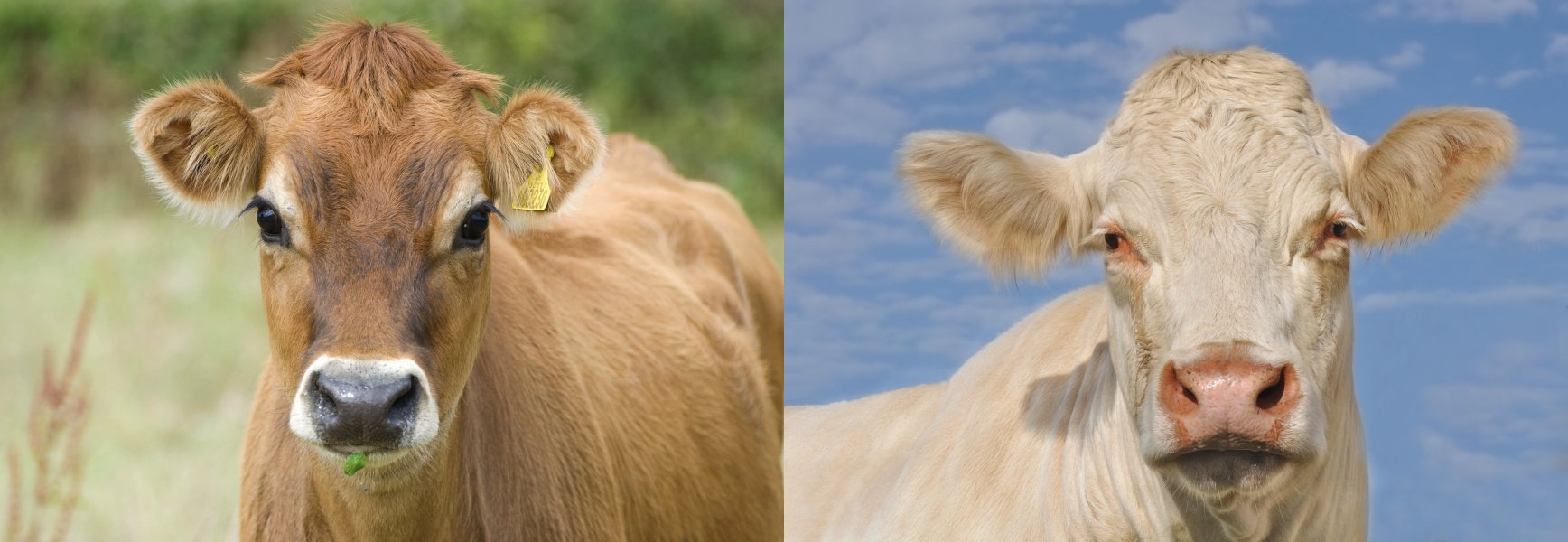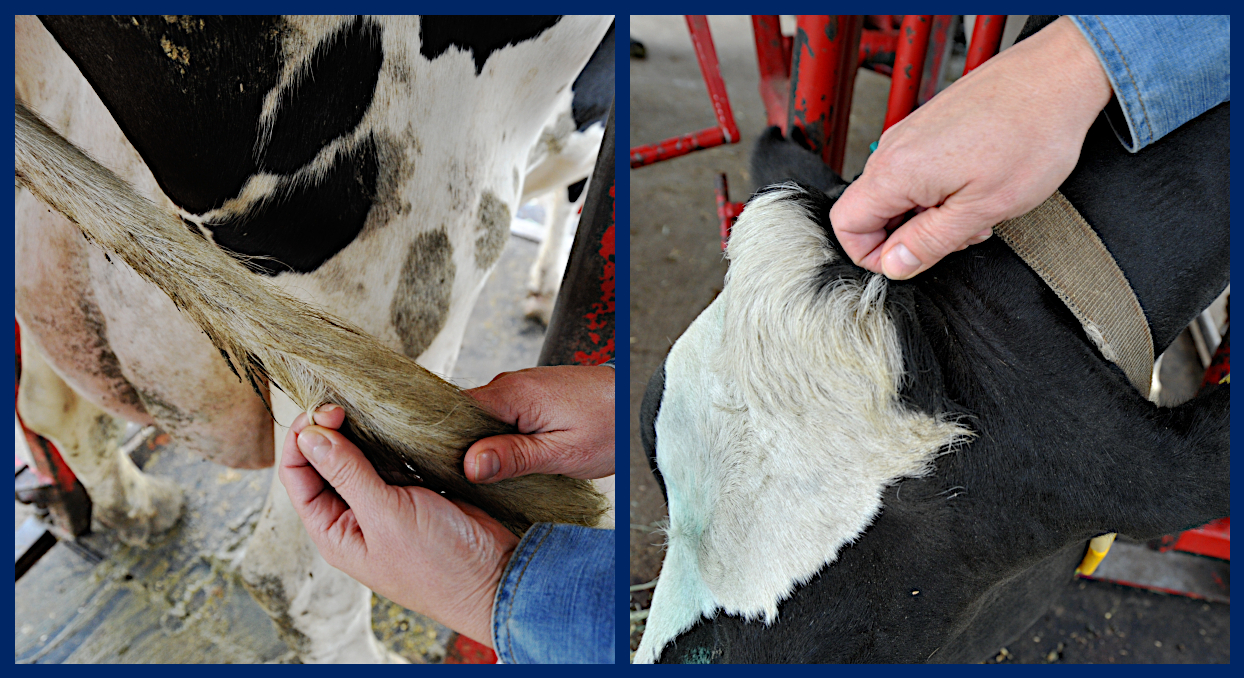Quick Summary

Click here for Price and Turnaround Time
Phenotype: Naturally polled cattle have been selectively bred to lack horns.
Mode of Inheritance: Autosomal dominant
Alleles: H = Horned, Pf = Polled (Friesian molecular marker), Pc = Polled (Celtic molecular marker)
Breeds appropriate for testing: European cattle breeds (Holstein-Friesian, Jersey, Angus, Blonde d’Aquitaine, Dexter, Limousin, Charolais, Hereford, Highland, etc.), Brahman cattle
Explanation of Results:
- Cattle with H/H genotype will be horned and cannot transmit either of these polled variants to their offspring.
- Cattle with Pf/H or Pc/H genotype will be polled and are heterozygous for the trait. They will transmit their polled variant to 50% of their offspring, and those calves will also be polled.
- Cattle with Pf/Pf or Pc/Pc are homozygous and will be polled. Cattle with the Pc/Pf genotype are considered compound heterozygotes. Cattle with Pf/Pf, Pc/Pc, or Pc/Pf will transmit a polled variant to all of their offspring, and all calves they produce will be polled regardless of the mate's genotype.
Sample Collection
Most of the cattle DNA tests offered by the VGL are carried out using cells from the roots of a hair sample (roughly 20-40 hairs).
Hair samples should be taken from the switch of the tail, the poll, or the neck.

1. Clean (use comb if possible) tail switch, poll, or neck by removing all loose hair and foreign matter.
2. Use fingers or pliers to grasp approximately 8-10 hairs close to the skin and pull. Pull (do NOT cut) hair strands. Examine the end of hair strands for presence of root bulbs. Hair roots are necessary for DNA testing. If the majority of hair strands lack the root bulbs, discard hair and start again.
3. Repeat until you have approximately 20-40 hairs with root follicles attached.
4. Place the 20-40 hairs with root follicles attached in the envelope and seal with the animal’s ID written on the envelope. If hairs are long they can be taped to the submission form. Do not tape the roots.

5. Repeat steps 1-4 for each additional animal being sampled.
Note:
- Hair should be dry.
- If hair has excess dirt and debris, please brush out if possible before pulling hairs for sample.
- Do not cut the hair! The roots contain the DNA for testing.
- When sampling several animals in the same session, make sure that there are no hair strands in your hands to reduce the possibility of sample contamination. Clean hands and/or pliers if possible.
From the time when livestock was first domesticated, modifications to the wild types have been selected both for animal husbandry and aesthetic reasons. Unique and large horns define cattle breeds such as Texas Longhorn, Highland Cattle, and Ankole Watusi. However, in modern times many cattle are maintained in more crowded conditions such as barns and small fenced pastures where polled phenotypes are more desirable for both beef and dairy breeds.
Recently, candidate mutations associated with polled phenotype in European breeds of cattle were found. There are 2 independent origins of polled, one found in Holstein-Friesian and Jersey breeds (Pf), the other in many European breeds of Celtic origin (Pc) such as Angus, Blonde d’Aquitaine, Dexter, Limousin, Charolais, and Hereford, among others. Investigation of the polled mutation in Brahman cattle revealed the segregation of the Celtic polled variant (Pc) in the breed. Polledness is dominant; a polled animal can have one or two copies of the polled alleles. All offspring of a homozygous polled bull (2 of the same polled allele, Pc/Pc or Pf/Pf) will be polled. Additionally, offspring with one copy of each of the polled alleles (Pc/Pf, compound heterozygous) will also be polled. Genetic testing is a cost-effective means to determine if a polled animal has 1 or 2 copies of the polled alleles.
Testing for the polled gene assists breeders in selecting cattle that have 2 copies of Polled gene.
